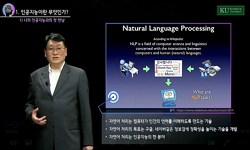Flood monitoring using satellite data has been constrained by obtaining satellite images for flood peak and accurately extracting flooded areas from satellite data. Deep learning is a promising method for satellite image classification, yet the potent...
http://chineseinput.net/에서 pinyin(병음)방식으로 중국어를 변환할 수 있습니다.
변환된 중국어를 복사하여 사용하시면 됩니다.
- 中文 을 입력하시려면 zhongwen을 입력하시고 space를누르시면됩니다.
- 北京 을 입력하시려면 beijing을 입력하시고 space를 누르시면 됩니다.


SegNet과 U-Net을 활용한 동남아시아 지역 홍수탐지 = Extracting Flooded Areas in Southeast Asia Using SegNet and U-Net
한글로보기https://www.riss.kr/link?id=A107112038
- 저자
- 발행기관
- 학술지명
- 권호사항
-
발행연도
2020
-
작성언어
Korean
- 주제어
-
등재정보
KCI등재,SCOPUS,ESCI
-
자료형태
학술저널
- 발행기관 URL
-
수록면
1095-1107(13쪽)
-
KCI 피인용횟수
0
- DOI식별코드
- 제공처
- 소장기관
-
0
상세조회 -
0
다운로드
부가정보
다국어 초록 (Multilingual Abstract)
Flood monitoring using satellite data has been constrained by obtaining satellite images for flood peak and accurately extracting flooded areas from satellite data. Deep learning is a promising method for satellite image classification, yet the potential of deep learning-based flooded area extraction using SAR data remained uncertain, which has advantages in obtaining data, comparing to optical satellite data. This research explores the performance of SegNet and U-Net on image segmentation by extracting flooded areas in the Khorat basin, Mekong river basin, and Cagayan river basin in Thailand, Laos, and the Philippines from Sentinel-1 A/B satellite data. Results show that Global Accuracy, Mean IoU, and Mean BF Score of SegNet are 0.9847, 0.6016, and 0.6467 respectively, whereas those of U-Net are 0.9937, 0.7022, 0.7125. Visual interpretation shows that the classification accuracy of U-Net is higher than SegNet, but overall processing time of SegNet is around three times faster than that of U-Net. It is anticipated that the results of this research could be used when developing deep learning-based flood monitoring models and presenting fully automated flooded area extraction models.
국문 초록 (Abstract)
홍수 발생 시 위성영상을 활용하여 침수된 지역을 추출하는 것은 홍수 발생 기간 내의 위성영상 취득과영상에 나타난 침수구역의 정확한 분류 등에서 많은 어려움이 존재한다. 딥러닝은 전...
홍수 발생 시 위성영상을 활용하여 침수된 지역을 추출하는 것은 홍수 발생 기간 내의 위성영상 취득과영상에 나타난 침수구역의 정확한 분류 등에서 많은 어려움이 존재한다. 딥러닝은 전통적인 영상분류기법들에 비해 보다 정확도가 높은 위성영상분류기법으로 주목받고 있지만, 광학영상에 비해 홍수 발생 시 위성영상의 취득이 용이한 SAR 영상의 분류 잠재력은 아직 명확히 규명되지 않았다. 본 연구는 대표적인 의미론적 영상 분할을 위한 딥러닝 모델인 SegNet과 U-Net을 활용하여 동남아시아의 라오스, 태국, 필리핀의 대표적인 홍수 발생지역인 코랏 유역(Khorat basin), 메콩강 유역(Mekong river basin), 카가얀강 유역(Cagayan river basin)에대해 Sentinel-1 A/B 위성영상으로부터 침수지역 추출을 실시하였다. 분석결과 침수지역 탐지에서 SegNet의 Global Accuracy, Mean IoU, Mean BF Score는 각각 0.9847, 0.6016, 0.6467로 나타났으며, U-Net의Global Accuracy, Mean IoU, Mean BF Score는 각각 0.9937, 0.7022, 0.7125로 나타났다. 국지적 분류결과 확인을 위한 육안검증에서 U-Net이 SegNet에 비해 보다 높은 분류 정확도를 보여주었지만, 모델의 훈련에 필요한 시간은 67분 17초와187분 19초가 각각 소요되어 SegNet이 U-Net에 비해 약 3배 정도 빠른 처리속도를 보여주었다. 본 연구의 결과는 향후 딥러닝 기법을 활용한 SAR 영상기반의 홍수탐지 모델과 실무적으로 활용이 가능한 자동화된 딥러닝기반의 수계탐지 기법의 제시를 위한 중요한 참고자료로 활용될 수 있을 것으로 판단된다.
참고문헌 (Reference)
1 Csurka, G., "What is a good evaluation measure for semantic segmentation?" 27 : 1-11, 2013
2 Wang, S., "Weakly Supervised Deep Learning for Segmentation of Remote Sensing Imagery" 12 (12): 207-, 2020
3 Ronneberger, O., "U-net:Convolutional networks for biomedical image segmentation" Springer 234-241, 2015
4 Greifeneder, F., "Suitability of SAR imagery for automatic flood mapping in the Lower Mekong Basin" 35 (35): 2857-2874, 2014
5 Twele, A., "Sentinel-1-based flood mapping : a fully automated processing chain" 37 (37): 2990-3004, 2016
6 Yang, M. D., "Semantic Segmentation Using Deep Learning with Vegetation Indices for Rice Lodging Identification in Multi-date UAV Visible Images" 12 (12): 633-, 2020
7 Badrinarayanan, V., "Segnet : A deep convolutional encoder-decoder architecture for image segmentation" 39 (39): 2481-2495, 2017
8 Manavalan, R., "SAR image analysis techniques for flood area mapping-literature survey" 10 (10): 1-14, 2017
9 Pashaei, M., "Review and evaluation of deep learning architectures for efficient land cover mapping with UAS hyper-spatial imagery : A case study over a Wetland" 12 (12): 959-, 2020
10 Du, L., "Mapping Forested Wetland Inundation in the Delmarva Peninsula, USA Using Deep Convolutional Neural Networks" 12 (12): 644-, 2020
1 Csurka, G., "What is a good evaluation measure for semantic segmentation?" 27 : 1-11, 2013
2 Wang, S., "Weakly Supervised Deep Learning for Segmentation of Remote Sensing Imagery" 12 (12): 207-, 2020
3 Ronneberger, O., "U-net:Convolutional networks for biomedical image segmentation" Springer 234-241, 2015
4 Greifeneder, F., "Suitability of SAR imagery for automatic flood mapping in the Lower Mekong Basin" 35 (35): 2857-2874, 2014
5 Twele, A., "Sentinel-1-based flood mapping : a fully automated processing chain" 37 (37): 2990-3004, 2016
6 Yang, M. D., "Semantic Segmentation Using Deep Learning with Vegetation Indices for Rice Lodging Identification in Multi-date UAV Visible Images" 12 (12): 633-, 2020
7 Badrinarayanan, V., "Segnet : A deep convolutional encoder-decoder architecture for image segmentation" 39 (39): 2481-2495, 2017
8 Manavalan, R., "SAR image analysis techniques for flood area mapping-literature survey" 10 (10): 1-14, 2017
9 Pashaei, M., "Review and evaluation of deep learning architectures for efficient land cover mapping with UAS hyper-spatial imagery : A case study over a Wetland" 12 (12): 959-, 2020
10 Du, L., "Mapping Forested Wetland Inundation in the Delmarva Peninsula, USA Using Deep Convolutional Neural Networks" 12 (12): 644-, 2020
11 Nemni, E., "Fully Convolutional Neural Network for Rapid Flood Segmentation in Synthetic Aperture Radar Imagery" 12 (12): 2532-, 2020
12 Long, S., "Flood extent mapping for Namibia using change detection and thresholding with SAR" 9 (9): 035002-, 2014
13 Kang, W., "Flood detection in gaofen-3 SAR images via fully convolutional networks" 18 (18): 2915-, 2018
14 Ma, L., "Deep learning in remote sensing applications : A meta-analysis and review" 152 : 166-177, 2019
15 Li, Y., "Deep learning for remote sensing image classification:A survey" 8 (8): e1264-, 2018
16 Pulvirenti, L., "An algorithm for operational flood mapping from synthetic aperture radar(SAR)data based on the fuzzy logic" 11 : 529-540, 2011
17 Goutte, C, "A probabilistic interpretation of precision, recall and F-score, with implication for evaluation" 345-359, 2005
18 Fernandez-Moral, E., "A new metric for evaluating semantic segmentation: leveraging global and contour accuracy" 1051-1056, 2018
동일학술지(권/호) 다른 논문
-
정지궤도 기상위성 및 수치예보모델 융합을 통한 Multi-task Learning 기반 태풍 강도 실시간 추정 및 예측
- 대한원격탐사학회
- 이주현
- 2020
- KCI등재,SCOPUS,ESCI
-
MODIS 광학 영상 자료를 통한 한반도 GPM 강우 자료의 상세화 기법
- 대한원격탐사학회
- 오승철
- 2020
- KCI등재,SCOPUS,ESCI
-
화학사고 피해저감을 위한 GIS 연계 복합시뮬레이션 프로토타입 개발에 관한 연구
- 대한원격탐사학회
- 김은별
- 2020
- KCI등재,SCOPUS,ESCI
-
- 대한원격탐사학회
- 박형준
- 2020
- KCI등재,SCOPUS,ESCI
분석정보
인용정보 인용지수 설명보기
학술지 이력
| 연월일 | 이력구분 | 이력상세 | 등재구분 |
|---|---|---|---|
| 2027 | 평가예정 | 재인증평가 신청대상 (재인증) | |
| 2021-01-01 | 평가 | 등재학술지 유지 (재인증) |  |
| 2018-01-01 | 평가 | 등재학술지 유지 (등재유지) |  |
| 2015-01-01 | 평가 | 등재학술지 유지 (등재유지) |  |
| 2011-01-01 | 평가 | 등재학술지 유지 (등재유지) |  |
| 2009-01-01 | 평가 | 등재학술지 유지 (등재유지) |  |
| 2007-01-01 | 평가 | 등재학술지 유지 (등재유지) |  |
| 2006-07-24 | 학술지등록 | 한글명 : 대한원격탐사학회지외국어명 : Korean Journal of Remote Sensing |  |
| 2005-01-01 | 평가 | 등재학술지 유지 (등재유지) |  |
| 2002-07-01 | 평가 | 등재학술지 선정 (등재후보2차) |  |
| 2000-01-01 | 평가 | 등재후보학술지 선정 (신규평가) |  |
학술지 인용정보
| 기준연도 | WOS-KCI 통합IF(2년) | KCIF(2년) | KCIF(3년) |
|---|---|---|---|
| 2016 | 0.52 | 0.52 | 0.54 |
| KCIF(4년) | KCIF(5년) | 중심성지수(3년) | 즉시성지수 |
| 0.53 | 0.44 | 0.725 | 0.12 |




 ScienceON
ScienceON KISS
KISS







